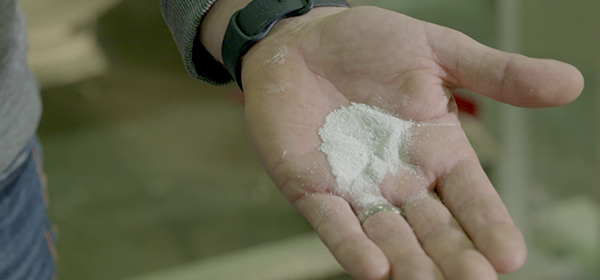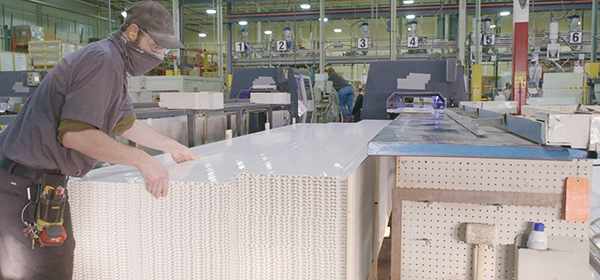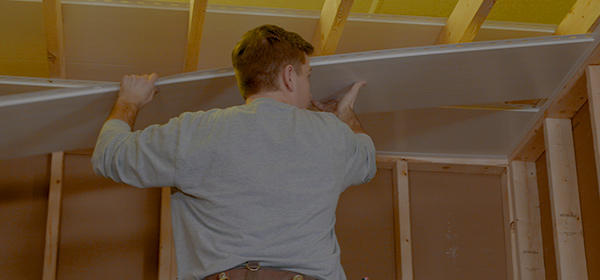Environmental Sustainability
At Trusscore, we believe the future of construction is sustainable, and we're leading the charge. Our PVC-based wall and ceiling products are designed to be more durable, reusable, and recyclable — combinining superior wall and ceiling performance with a lower carbon footprint. Here's how.
How Trusscore Creates Sustainable Building Materials
The building sector generates nearly 40% of annual global greenhouse gas emissions. At Trusscore, we’re committed to lowering our carbon footprint across the entire product lifecycle — from raw material extraction to end-of-life recycling. Explore how we minimize our carbon footprint through three core sustainability areas below.



Did you know?
While 75% of drywall ends up in landfills, where it releases harmful hydrogen sulfide gas and sulfates, PVC products like Trusscore can be recycled six to seven times to create new building materials.
The Trusscore Embodied Carbon Advantage
Embodied carbon is the greenhouse gas released throughout a material’s life cycle — from production to transportation, use, and disposal — that contributes to global warming. Drywall starts with a lower carbon footprint than Trusscore Wall&CeilingBoard — 34 kg CO2-eq per 100 square feet to 89 kg. But over 60 years, repainting dramatically increases drywall’s impact:
Repainting Every 15 Years
Adds 26 kg CO2-eq, bringing drywall’s total to 61 kg.
Repainting Every 10 Years
Adds 65 kg CO2-eq, bringing the drywall total to 154 kg.
Repainting Every 5 Years
Adds 184 kg CO2-eq, bringing the total to 273 kg.
Trusscore Wall&CeilingBoard doesn’t require painting — ever. This not only eliminates the ongoing costs and labor associated with repainting, but it also significantly reduces the overall embodied carbon compared to drywall over time. Even though its initial embodied carbon is higher, the absence of paint means its footprint remains constant throughout its 60-year service life.
Trusscore Contributes to LEED Certification
LEED is a globally recognized certification system that encourages sustainable, green building practices. Trusscore Wall&CeilingBoard, SlatWall, NorLock, RibCore, and TempWall can help builders earn four credits in the Materials and Resources and the Indoor Environmental Quality categories for LEED certification.
Construction & Demolition Waste Management Credit
Trusscore products are 100% recyclable through municipal facilities where accepted and customers can return off-cuts to Trusscore manufacturing facilities for recycling.
Interiors Life Cycle Impact Reduction Credit
Trusscore offers custom sizes to reduce waste, and off-cuts can be recycled into new materials. Trusscore panels are also easy to install, remove, and reuse in different buildings.
Low-Emitting Materials
Credit
Trusscore Wall&CeilingBoard, RibCore, NorLock, and TempWall are low-VOC compliant and meet California’s CDPH 01350 standard for low-emitting materials.
Interior Lighting
Credit
Trusscore Wall&CeilingBoard has a 0.90 light reflectivity rate — reflecting 90% of light that hits it. This enhances natural and fixture lighting, reduces energy consumption, and lowers costs.
Our material science-based approach is pushing the boundaries to create sustainable building materials that perform. At Trusscore, we are always thinking about the environmental impact to reduce the footprint the building materials industry is leaving behind.
Dave Caputo, CEO




